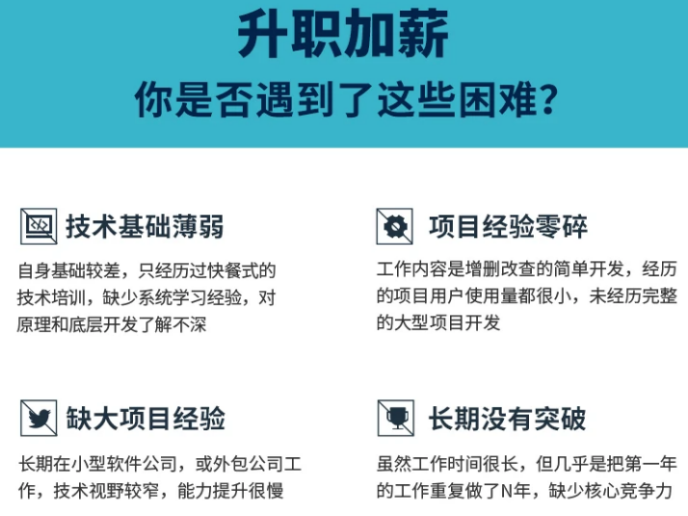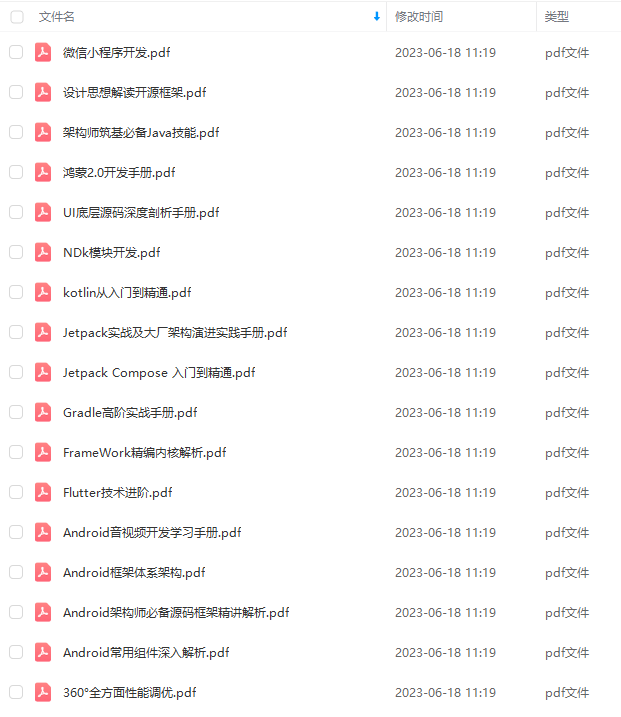2. onPreExecute(),在execute(Params… params)被调用后立即执行,一般用来在执行后台任务前对UI做一些标记。
3. doInBackground(Params… params),在onPreExecute()完成后立即执行,用于执行较为费时的操作,此方法将接收输入参数和返回计算结果。在执行过程中可以调用publishProgress(Progress… values)来更新进度信息。
4. onProgressUpdate(Progress… values),在调用publishProgress(Progress… values)时,此方法被执行,直接将进度信息更新到UI组件上。
5. onPostExecute(Result result),当后台操作结束时,此方法将会被调用,计算结果将做为参数传递到此方法中,直接将结果显示到UI组件上。
在使用的时候,有几点需要格外注意:
1. 异步任务的实例必须在UI线程中创建。
2. execute(Params… params)方法必须在UI线程中调用。
3. 不能在doInBackground(Params… params)中更改UI组件的信息。
4. 一个任务实例只能执行一次,如果执行第二次将会抛出异常。
一 、 AsyncTask的使用示例
==================
接下来,我们来看看如何使用AsyncTask执行异步任务操作,我们先建立一个项目,结构如下:
结构相对简单一些,让我们先看看MainActivity.java的代码:
package com.scott.async;
import java.io.ByteArrayOutputStream;
import java.io.InputStream;
import org.apache.http.HttpEntity;
import org.apache.http.HttpResponse;
import org.apache.http.HttpStatus;
import org.apache.http.client.HttpClient;
import org.apache.http.client.methods.HttpGet;
import org.apache.http.impl.client.DefaultHttpClient;
import android.app.Activity;
import android.os.AsyncTask;
import android.os.Bundle;
import android.util.Log;
import android.view.View;
import android.widget.Button;
import android.widget.ProgressBar;
import android.widget.TextView;
public class MainActivity extends Activity {
private static final String TAG = “ASYNC_TASK”;
private Button execute;
private Button cancel;
private ProgressBar progressBar;
private TextView textView;
private MyTask mTask;
@Override
public void onCreate(Bundle savedInstanceState) {
super.onCreate(savedInstanceState);
setContentView(R.layout.main);
execute = (Button) findViewById(R.id.execute);
execute.setOnClickListener(new View.OnClickListener() {
@Override
public void onClick(View v) {
// 注意每次需new一个实例,新建的任务只能执行一次,否则会出现异常
mTask = new MyTask();
mTask.execute(“http://www.baidu.com”);
execute.setEnabled(false);
cancel.setEnabled(true);
}
});
cancel = (Button) findViewById(R.id.cancel);
cancel.setOnClickListener(new View.OnClickListener() {
@Override
public void onClick(View v) {
//取消一个正在执行的任务,onCancelled方法将会被调用,实际上是调用了FutureTask的取消操作,关于FutureTask下文会有介绍
mTask.cancel(true);
}
});
progressBar = (ProgressBar) findViewById(R.id.progress_bar);
textView = (TextView) findViewById(R.id.text_view);
}
private class MyTask extends AsyncTask<String, Integer, String> {
//onPreExecute方法用于在执行后台任务前做一些UI操作
@Override
protected void onPreExecute() {
Log.i(TAG, “onPreExecute() called”);
textView.setText(“loading…”);
}
// doInBackground方法内部执行后台任务,不可在此方法内修改UI,运行在后台线程。
@Override
protected String doInBackground(String… params) {
Log.i(TAG, “doInBackground(Params… params) called”);
try {
HttpClient client = new DefaultHttpClient();
HttpGet get = new HttpGet(params[0]);
HttpResponse response = client.execute(get);
if (response.getStatusLine().getStatusCode() == HttpStatus.SC_OK) {
HttpEntity entity = response.getEntity();
InputStream is = entity.getContent();
long total = entity.getContentLength();
ByteArrayOutputStream baos = new ByteArrayOutputStream();
byte[] buf = new byte[1024];
int count = 0;
int length = -1;
while ((length = is.read(buf)) != -1) {
baos.write(buf, 0, length);
count += length;
//调用publishProgress公布进度,最后onProgressUpdate方法将被执行
publishProgress((int) ((count / (float) total) * 100));
//为了演示进度,休眠500毫秒
Thread.sleep(500);
}
return new String(baos.toByteArray(), “gb2312”);
}
} catch (Exception e) {
Log.e(TAG, e.getMessage());
}
return null;
}
// onProgressUpdate方法用于更新进度信息
@Override
protected void onProgressUpdate(Integer… progresses) {
Log.i(TAG, “onProgressUpdate(Progress… progresses) called”);
progressBar.setProgress(progresses[0]);
textView.setText(“loading…” + progresses[0] + “%”);
}
// onPostExecute方法用于在执行完后台任务后更新UI,显示结果。 运行在UI线程
@Override
protected void onPostExecute(String result) {
Log.i(TAG, “onPostExecute(Result result) called”);
textView.setText(result);
execute.setEnabled(true);
cancel.setEnabled(false);
}
//onCancelled方法用于在取消执行中的任务时更改UI
@Override
protected void onCancelled() {
Log.i(TAG, “onCancelled() called”);
textView.setText(“cancelled”);
progressBar.setProgress(0);
execute.setEnabled(true);
cancel.setEnabled(false);
}
}
}
布局文件main.xml代码如下:
<?xml version="1.0" encoding="utf-8"?><LinearLayout xmlns:android=“http://schemas.android.com/apk/res/android”
android:orientation=“vertical”
android:layout_width=“fill_parent”
android:layout_height=“fill_parent”>
<Button
android:id=“@+id/execute”
android:layout_width=“fill_parent”
android:layout_height=“wrap_content”
android:text=“execute”/>
<Button
android:id=“@+id/cancel”
android:layout_width=“fill_parent”
android:layout_height=“wrap_content”
android:enabled=“false”
android:text=“cancel”/>
<ProgressBar
android:id=“@+id/progress_bar”
android:layout_width=“fill_parent”
android:layout_height=“wrap_content”
android:progress=“0”
android:max=“100”
style=“?android:attr/progressBarStyleHorizontal”/>
<ScrollView
android:layout_width=“fill_parent”
android:layout_height=“wrap_content”>
<TextView
android:id=“@+id/text_view”
android:layout_width=“fill_parent”
android:layout_height=“wrap_content”/>
因为需要访问网络,所以我们还需要在AndroidManifest.xml中加入访问网络的权限:
二、 AsyncTask的实现基本原理
===================
上面介绍了AsyncTask的基本应用,有些朋友也许会有疑惑,AsyncTask内部是怎么执行的呢,它执行的过程跟我们使用Handler又有什么区别呢?答案是:AsyncTask是对Thread+Handler良好的封装,在android.os.AsyncTask代码里仍然可以看到Thread和Handler的踪迹。下面就向大家详细介绍一下AsyncTask的执行原理。
源代码如下 :
/**
-
Override this method to perform a computation on a background thread. The
-
specified parameters are the parameters passed to {@link #execute}
-
by the caller of this task.
-
This method can call {@link #publishProgress} to publish updates
-
on the UI thread.
-
@param params The parameters of the task.
-
@return A result, defined by the subclass of this task.
-
这是一个abstract 方法,因此必须覆写。
-
@see #onPreExecute()
-
@see #onPostExecute
-
@see #publishProgress
*/
protected abstract Result doInBackground(Params… params);
/**
-
Runs on the UI thread before {@link #doInBackground}.
-
@see #onPostExecute
-
@see #doInBackground
*/
protected void onPreExecute() {
}
/**
-
Runs on the UI thread after {@link #doInBackground}. The
-
specified result is the value returned by {@link #doInBackground}
-
or null if the task was cancelled or an exception occured.
*后台操作执行完后会调用的方法,在此更新UI。
-
@param result The result of the operation computed by {@link #doInBackground}.
-
@see #onPreExecute
-
@see #doInBackground
*/
@SuppressWarnings({“UnusedDeclaration”})
protected void onPostExecute(Result result) {
}
/**
-
Runs on the UI thread after {@link #publishProgress} is invoked.
-
The specified values are the values passed to {@link #publishProgress}.
-
@param values The values indicating progress.
-
传值更新进度条
-
@see #publishProgress
-
@see #doInBackground
*/
@SuppressWarnings({“UnusedDeclaration”})
protected void onProgressUpdate(Progress… values) {
}
/**
-
Executes the task with the specified parameters. The task returns
-
itself (this) so that the caller can keep a reference to it.
-
This method must be invoked on the UI thread. 注意execute方法必须在UI线程中调用
-
@param params The parameters of the task.
-
@return This instance of AsyncTask.
-
@throws IllegalStateException If {@link #getStatus()} returns either
-
{@link AsyncTask.Status#RUNNING} or {@link AsyncTask.Status#FINISHED}.
*/
public final AsyncTask<Params, Progress, Result> execute(Params… params) {
if (mStatus != Status.PENDING) {
// 状态检测,只有在PENDING状态下才能正常运行,构造抛出异常
switch (mStatus) {
case RUNNING:
throw new IllegalStateException(“Cannot execute task:”
- " the task is already running.");
case FINISHED:
throw new IllegalStateException(“Cannot execute task:”
-
" the task has already been executed "
-
“(a task can be executed only once)”);
}
}
mStatus = Status.RUNNING;
// 正在执行任务前的准备处理
onPreExecute();
// 获得从UI现存传递来的参数
mWorker.mParams = params;
// 交给线程池管理器进行调度,参数为FutureTask类型,构造mFuture时mWorker被传递了进去,后边会继续分析
sExecutor.execute(mFuture);
// 返回自身,使得调用者可以保持一个引用
return this;
}
/**
-
This method can be invoked from {@link #doInBackground} to
-
publish updates on the UI thread while the background computation is
-
still running. Each call to this method will trigger the execution of
-
{@link #onProgressUpdate} on the UI thread.
-
@param values The progress values to update the UI with.
-
@see #onProgressUpdate
-
@see #doInBackground
*/
protected final void publishProgress(Progress… values) {
sHandler.obtainMessage(MESSAGE_POST_PROGRESS,
new AsyncTaskResult(this, values)).sendToTarget();
}
我们可以看到关键几个步骤的方法都在其中。
1、 doInBackground(Params… params) 是一个抽象方法,我们继承AsyncTask时必须覆写此方法;
2、 onPreExecute()、onProgressUpdate(Progress… values)、onPostExecute(Result result)、onCancelled() 这几个方法体都是空的,我们需要的时候可以选择性的覆写它们;
3、 publishProgress(Progress… values) 是final修饰的,不能覆写,只能去调用,我们一般会在doInBackground(Params… params)中调用此方法来更新进度条;
**4、**另外,我们可以看到有一个Status的枚举类和getStatus()方法,Status枚举类代码段如下:
//初始状态
private volatile Status mStatus = Status.PENDING;
public enum Status {
/**
- Indicates that the task has not been executed yet.
*/
PENDING,
/**
- Indicates that the task is running.
*/
RUNNING,
/**
- Indicates that {@link AsyncTask#onPostExecute} has finished.
*/
FINISHED,
}
/**
-
Returns the current status of this task.
-
@return The current status.
*/
public final Status getStatus() {
return mStatus;
}
可以看到,AsyncTask的初始状态为 PENDING ,代表待定状态, RUNNING 代表执行状态, FINISHED 代表结束状态,这几种状态在AsyncTask一次生命周期内的很多地方被使用,非常重要。
在execute函数中涉及到三个陌生的变量:mWorker、sExecutor、mFuture,我们也会看一下:
关于sExecutor,它是java.util.concurrent.ThreadPoolExecutor的实例,用于管理线程的执行。代码如下:
private static final int CORE_POOL_SIZE = 5;
private static final int MAXIMUM_POOL_SIZE = 128;
private static final int KEEP_ALIVE = 10;
//新建一个队列用来存放线程
private static final BlockingQueue sWorkQueue =
new LinkedBlockingQueue(10);
//新建一个线程工厂
private static final ThreadFactory sThreadFactory = new ThreadFactory() {
private final AtomicInteger mCount = new AtomicInteger(1);
//新建一个线程
public Thread newThread(Runnable r) {
return new Thread(r, “AsyncTask #” + mCount.getAndIncrement());
}
};
//新建一个线程池执行器,用于管理线程的执行
private static final ThreadPoolExecutor sExecutor = new ThreadPoolExecutor(CORE_POOL_SIZE,
自我介绍一下,小编13年上海交大毕业,曾经在小公司待过,也去过华为、OPPO等大厂,18年进入阿里一直到现在。
深知大多数初中级安卓工程师,想要提升技能,往往是自己摸索成长,但自己不成体系的自学效果低效又漫长,而且极易碰到天花板技术停滞不前!
因此收集整理了一份《2024年最新Android移动开发全套学习资料》送给大家,初衷也很简单,就是希望能够帮助到想自学提升又不知道该从何学起的朋友,同时减轻大家的负担。




由于文件比较大,这里只是将部分目录截图出来,每个节点里面都包含大厂面经、学习笔记、源码讲义、实战项目、讲解视频
如果你觉得这些内容对你有帮助,可以添加下面V无偿领取!(备注Android)

最后
答应大伙的备战金三银四,大厂面试真题来啦!
这份资料我从春招开始,就会将各博客、论坛。网站上等优质的Android开发中高级面试题收集起来,然后全网寻找最优的解答方案。每一道面试题都是百分百的大厂面经真题+最优解答。包知识脉络 + 诸多细节。
节省大家在网上搜索资料的时间来学习,也可以分享给身边好友一起学习。
给文章留个小赞,就可以免费领取啦~
《960全网最全Android开发笔记》

《379页Android开发面试宝典》
包含了腾讯、百度、小米、阿里、乐视、美团、58、猎豹、360、新浪、搜狐等一线互联网公司面试被问到的题目。熟悉本文中列出的知识点会大大增加通过前两轮技术面试的几率。
如何使用它?
1.可以通过目录索引直接翻看需要的知识点,查漏补缺。
2.五角星数表示面试问到的频率,代表重要推荐指数

《507页Android开发相关源码解析》
只要是程序员,不管是Java还是Android,如果不去阅读源码,只看API文档,那就只是停留于皮毛,这对我们知识体系的建立和完备以及实战技术的提升都是不利的。
真正最能锻炼能力的便是直接去阅读源码,不仅限于阅读各大系统源码,还包括各种优秀的开源库。

腾讯、字节跳动、阿里、百度等BAT大厂 2020-2021面试真题解析

资料收集不易,如果大家喜欢这篇文章,或者对你有帮助不妨多多点赞转发关注哦。文章会持续更新的。绝对干货!!!
优质的Android开发中高级面试题收集起来,然后全网寻找最优的解答方案。每一道面试题都是百分百的大厂面经真题+最优解答。包知识脉络 + 诸多细节。
节省大家在网上搜索资料的时间来学习,也可以分享给身边好友一起学习。
给文章留个小赞,就可以免费领取啦~
《960全网最全Android开发笔记》
[外链图片转存中…(img-J8d7ro9J-1710506961508)]
《379页Android开发面试宝典》
包含了腾讯、百度、小米、阿里、乐视、美团、58、猎豹、360、新浪、搜狐等一线互联网公司面试被问到的题目。熟悉本文中列出的知识点会大大增加通过前两轮技术面试的几率。
如何使用它?
1.可以通过目录索引直接翻看需要的知识点,查漏补缺。
2.五角星数表示面试问到的频率,代表重要推荐指数
[外链图片转存中…(img-Ia0eS0PL-1710506961508)]
《507页Android开发相关源码解析》
只要是程序员,不管是Java还是Android,如果不去阅读源码,只看API文档,那就只是停留于皮毛,这对我们知识体系的建立和完备以及实战技术的提升都是不利的。
真正最能锻炼能力的便是直接去阅读源码,不仅限于阅读各大系统源码,还包括各种优秀的开源库。
[外链图片转存中…(img-GjnG0HyM-1710506961508)]
腾讯、字节跳动、阿里、百度等BAT大厂 2020-2021面试真题解析
[外链图片转存中…(img-yxRfHFDC-1710506961509)]
资料收集不易,如果大家喜欢这篇文章,或者对你有帮助不妨多多点赞转发关注哦。文章会持续更新的。绝对干货!!!























 被折叠的 条评论
为什么被折叠?
被折叠的 条评论
为什么被折叠?








